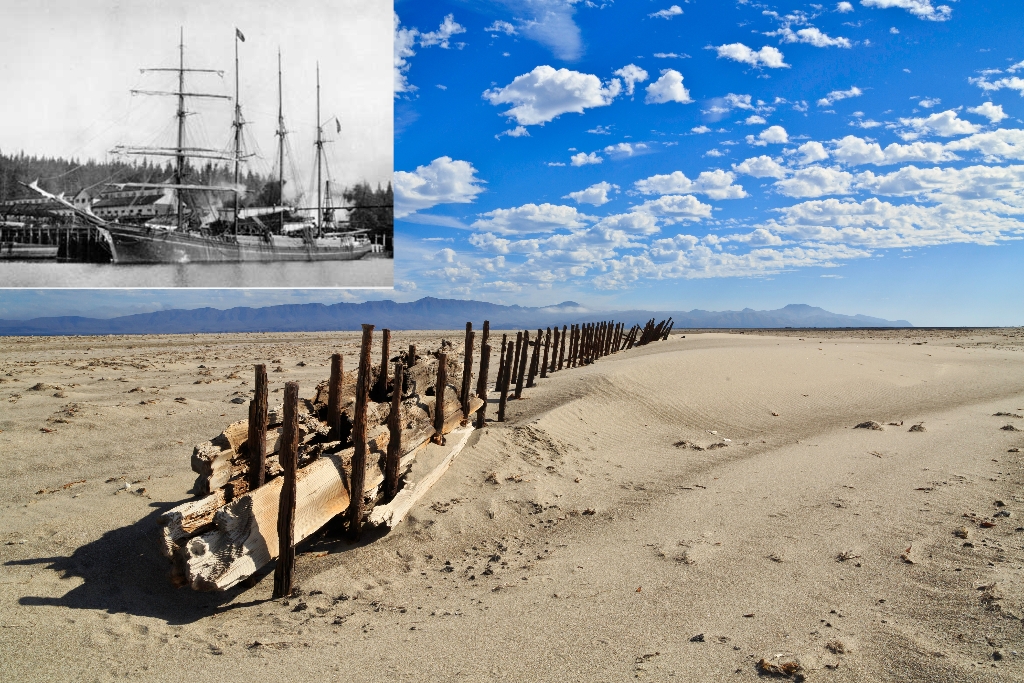
From March 1 to September 15, the back beaches and sand dunes between and including Skunk Point to just north of East Point are closed to hiking to protect the nesting area for the snowy plover, a federally listed, threatened shorebird. Please remain on the wet sand (below mean high tide) or the road throughout this area during this time.
Amid the plentiful driftwood along the north side of Skunk Point on Santa Rosa Island, a careful eye will observe distinctive fragments of a large wooden ship. In one spot, a series of ship's knees (massive braces that tie a vessel's deck to the side of the hull-think shelf brackets) juts from the sand. Further east 80 feet of massive timbers, tied together with thick iron pins ("drifts" in nautical speak) form the remnants of a massive backbone (or keelson).
These are the remains of the Jane L. Stanford, the largest wooden ship to wreck within Channel Islands National Park. Over 215 feet long and 41 feet wide, Hans Bendixen made the Jane L. Stanford specifically for carrying lumber across the Pacific Ocean to destinations such as South Africa and Australia. The ship was rigged as a four-masted barkentine, with square sails on her foremast.
By 1926 the Jane L. Stanford, no longer competitive in her original trade, became a fishing barge off Los Angeles and then Santa Barbara, a typical fate for older sailing ships. In 1929 a steamer entering Santa Barbara rammed the ship. Damaged beyond repair but unsinkable, the hulk was a serious navigation hazard. The Coast Guard cutter Tamaroa towed her near Skunk Point where 26 naval wrecking mines blew the wreck apart over four days, scattering wreckage along two miles of beach. The distant explosions precipitated numerous calls to the Santa Barbara police, thirty miles away.
The Jane L. Stanford is just one of over 140 documented shipwrecks in the waters of Channel Islands National Park and Channel Islands National Marine Sanctuary. The significant number of shipwrecks within these boundaries can largely be attributed to prevailing currents and weather conditions, combined with natural hazards.
The shipwreck remains of the Channel Islands reflect the diverse range of activities and nationalities that traversed the Santa Barbara Channel. European sailing and steam vessels, California-built Chinese junks, American coastal traders, vessels engaged in island commerce and a Gold Rush-era sidewheel steamers have all been lost in these waters.
Today, park and sanctuary archeologists and partners study shipwrecks to learn more about these relics of history, shedding new light on the remarkable stories of our maritime heritage.
Is there something we missed for this itinerary?
Itineraries across USA


















































